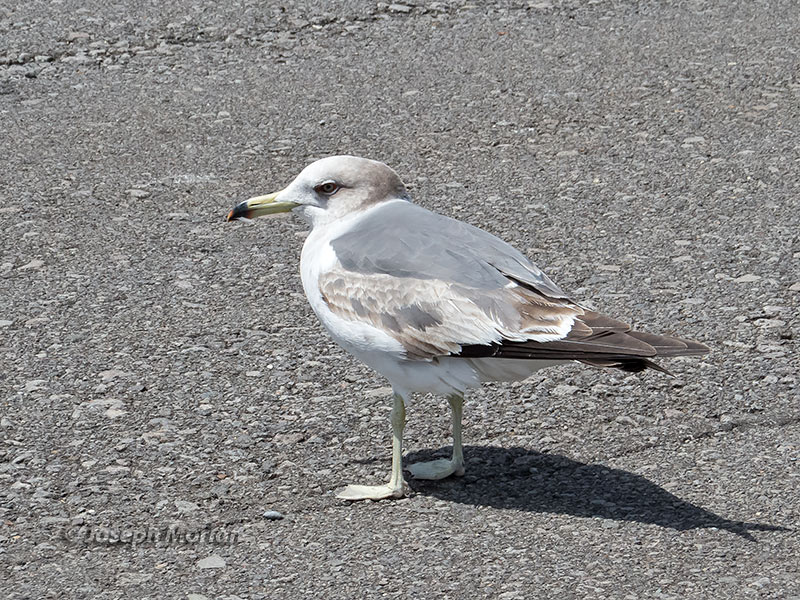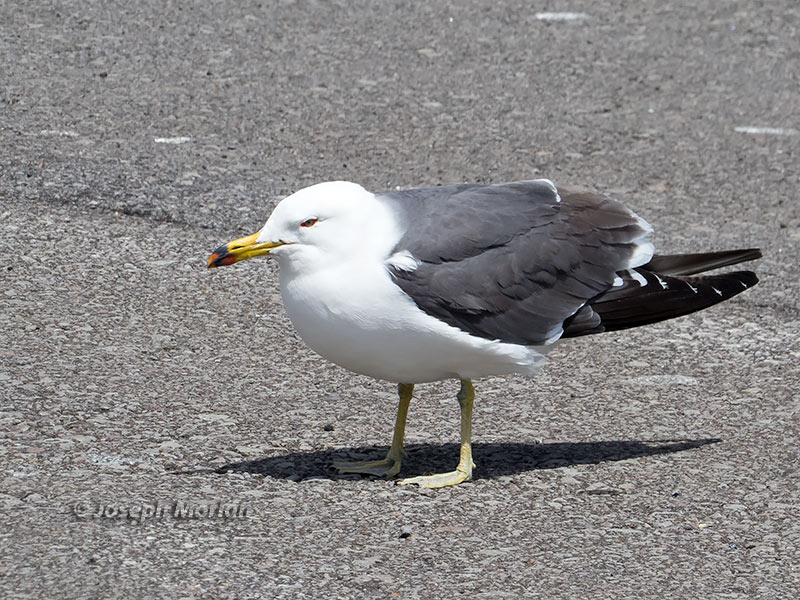


This distinctive species retains a dark tail band into adulthood. They were very common in harbors and bays around Japan. Their distribution is centered around East Asia but they have strayed to Alaska and North America. Bottom photo is an adult in breeding plumage. First cycle top and second cycle middle. They reportedly take four years to reach adulthood, but the third cycle is difficult to detect because it is so similar to the adult. The main differences are said to be a brownish tinge to the wing coverts, duller yellow legs and smaller white primary tips in unworn plumage. The differences are subtle and it remains unclear whether all individuals have a recognizable 3rd cycle plumage. Canon PowerShot SX50 HS.
References:
Burger, J., Gochfeld, M., Kirwan, G.M. & Garcia, E.F.J. (2017). Black-tailed Gull (Larus crassirostris). In: del Hoyo, J., Elliott, A., Sargatal, J., Christie, D.A. & de Juana, E. (eds.). Handbook of the Birds of the World Alive. Lynx Edicions, Barcelona. (retrieved from http://www.hbw.com/node/53965 on 9 June 2017).
Howell, S.N.G. & Dunn, J.L. (2007) Gulls of the Americas. Houghton Mifflin, Boston.
Howell, S.N.G., Lewington, I. & Russell, W. (2014) Rare Birds of North America. Princeton Univ. Press
Lethaby, N. & Bangma, J. (1998). Identifying Black-tailed Gull in North America. Birding 30 (6): 470-483.